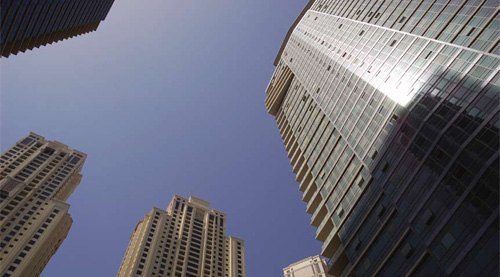Right-Sizing, not over-sizing, the HVAC systems in the Gulf, is the way to go
Right-Sizing, not over-sizing, the HVAC systems in the Gulf, is the way to go

Buildings in Dubai are equipped with over-sized air-conditioning units to counter the emirate’s hot and humid climate, says Siterman
The Gulf region is hot, humid, and is quickly becoming the world headquarters for huge towers and hotels behind glass curtain walls. It is also the global leader in large air conditioning systems which are often over-sized. Ironically, the indoor climate induced by these over-sized air conditioning systems is not particularly comfortable. Moreover, the excessively humid indoor air, if not treated correctly, causes condensation with a possibility of consequent mould and odour problems.
More than one engineer has told me that it is better to make people “freeze” than make them “hot” and get blamed for it. Both of these scenarios are unacceptable. The art of engineering is to provide the optimum indoor environment where the occupants feel comfortable – neither hot nor cold, but just right. In addition to temperature, a frequently overlooked, but critically important factor to the overall comfort level, is indoor humidity.
Levels of humidity inside general buildings, such as offices, hotels and residential towers, greatly depend on the volume of outdoor air infiltrated through the exterior envelope and building openings (entrance doors, air vents, etc). High levels of indoor air humidity, even with acceptable space temperature, lead to uncomfortable conditions – cool but clammy. Commonly used buildingpressurisation approaches can help reduce infiltration, but cannot eliminate it entirely because of its complex nature.
Often, air-conditioning systems are specified when a building is still in the conceptual design stage, and when complete information (such as façade details and glass performance) is not available. Systems are usually over-sized to compensate for the missing information and often not modified in later stages of design. An over-sized air conditioning system will cool a space down more quickly before cycling off. But the frequent on/off cycling diminishes the system’s dehumidification efficiency, which then increases the space-moisture level and raises the air-dewpoint temperature.
Condensation is often the result when supply-air temperature becomes lower than the space dewpoint temperature. It is a very visible result, and is often seen on windows and supply air grilles. Condensation may also result in mould and odour problems. This is especially serious in hotels, where operation of air conditioning systems is dependent on room occupancy. In a case where equipment is located above the ceiling, water dripping may even occur, because once turned on, over-sized equipment tries to catch up with the temperature and humidity set points and remove excessive moisture from indoor air as quickly as possible. This can overflow the drain pan.
The problem of over-sized airconditioning systems in the Gulf would be bad enough, if it was limited only to poor indoor environment and negative effects of condensation. But over-sized systems also reduce building value, ambiance and profits.
The larger equipment, ductwork, piping, and associated systems and services are more expensive, both in capital and operating costs. This reduces owner profits. The larger mechanical equipment decreases usable floor space, thus reducing potential returns. The larger-than-necessary ductwork results in lowered ceiling heights, reducing room ambiance. The larger equipment, in short, is wasteful in terms of energy, space and financial resources.
The right solution is always one that is conceived specifically for the building’s situation. Each building – ground-up or renovated, hotel or housing – has its needs and goals. For all occurrences, however, one should follow the latest codes and design recommendations for acceptable indoor environment, such as those found in ASHRAE Standard 55 Thermal Environmental Conditions for Human Occupancy and ASHRAE Standard 160 Criteria for Moisture- Control Design Analysis in Buildings.
When working on new construction, ascertain that cooling load calculations are performed utilising the latest climatic design information and the appropriate design methodologies. It is important that the cooling load be verified and adjusted at each stage of the design process, as more information about the real needs of the building become clear.
When selecting new air conditioning equipment, calculate the load specifically, and even choose something slightly undersized to allow for even and longer continuous system operation. Another technique that prolongs equipment operation is implementing appropriate control strategies, including equipment with variable chilled water and air flow.
When retrofitting or renovating existing buildings, it’s important to remember that existing air-conditioning systems can always be made better. Modifying constant air volume equipment will allow variable air flow to satisfy dynamic cooling load changes. To reduce equipment cooling capacity without rapid cycling of the chilled water control valve, adapt the chilled water temperatures entering equipment by providing a mixed valve arrangement. Improved control strategies will also improve system efficiency and reduce energy consumption.
In the Gulf and anywhere in world, where climate is typically hot and humid, airconditioning systems should be carefully designed to ensure that results, not waste, are the rule. Value engineers with their troubleshooting experience can effectively advise on how to streamline air-conditioning systems, to reduce both capital and operating costs, and to obtain better indoor environment for building occupants.

Copyright © 2006-2025 - CPI Industry. All rights reserved.